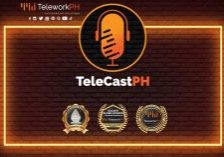Data Annotation: Merging the Machine and the Human Touch
TeleworkPH
Published: July 29, 2020
In the fast-evolving landscape of AI, data annotation stands as the linchpin between raw data and advanced machine learning. This process, often overlooked, is a fusion of machine precision and human insight. Beyond automation, it embodies a symbiotic relationship that enhances model accuracy and introduces contextual depth. This exploration unravels how technology and human expertise converge in data annotation, shaping the bedrock of AI applications. The marriage of artificial and human intelligence not only refines algorithms but also brings a nuanced perspective, underlining the pivotal role of both in the relentless pursuit of smarter, more adaptive systems.
The developments in Artificial Intelligence have been impressive so far, but AI is not as advanced as you think. Like humans, it still needs to feed on information and training to accomplish an action. To this day, AI machine learning still relies on human knowledge in order to accurately put out complex tasks. This human knowledge, when translated to a well-annotated data, is the key to improve AI learning.


Let us help you scale your business. Book a
FREE
value-bomb
strategy session with our
Outsourcing Specialist NOW!

What is Data Annotation?
Data annotation is the act of labeling content in the form of a text, image, audio, or video that’s understandable to machines. It turns unstructured data into structured data that machines can comprehend. Data annotation needs supervised learning to ensure that the annotated data are clean.
For example, a self-driving car needs to identify objects and situations in order to make objective decisions. Data annotation feeds the self-driving car contextual objects through images, videos, or Lidar (light detection and ranging). Image and video annotation are just a few of the formats you can annotate. Depending on your AI application, you can customize any of the types of data annotation below:
Types of Data Annotation
Text Annotation
Text annotation is mainly used for natural language processing (NLP) and speech recognition systems. This type of annotation can classify and categorize text in order for machines to understand native languages. You can tag words or sentences by a given topic or classification. For example, you can annotate news articles and classify them from the year they were published. While for speech recognition purposes, AI chatbots can recognize customer speech patterns and can predict queries through text annotation.
Audio Annotation
Audio annotation is another type of annotation used for speech recognition. Much like text annotation, audio annotation also uses metadata and keyword tagging for more accurate identification. Speech annotation uses ontology labels to understand the sound. For example, you listen to a voice clip and you tag “liquid sounds” or “vibrating objects” to particular audio timestamps.
Image Annotation
Image annotation is the most common type of data annotation. It uses object recognition to visually translate elements of an image to a machine. There are different techniques and methods used in image annotation such as bounding box, semantic segmentation, cuboid annotation, polygon annotation, lines and splines, and key point annotation. Still, your AI project will determine if all or some of these methods should be applied. For example, you can label “nose” or “mouth” in image sets for face recognition programs to learn the parts of the human face.
Video Annotation
Video annotation, like image annotation, also uses object recognition for visual training of AI models. In this case, videos are annotated frame-by-frame much like creating screenshot images. Video annotation also uses techniques such as bounding boxes, cuboid annotation, and polygon annotation. This type of annotation is commonly applied to self-driving car programs.
Data Annotation Tasks
According to Inside Big Data, data annotation can address most AI application problems through these tasks:
Sequencing
“Text or time series from which there’s a start, an end, and a label. E.g., recognize the name of a person in a text or identify a paragraph discussing penalties in a contract.”
Mapping
“Language-to-language, full text to a summary, a question to an answer, raw data to normalized data. E.g., translate from French to English or from free text to a standard format.”
Categorization
“Binary classes, multiple classes, one label, multi-labels, flat, or hierarchic. E.g., categorize a book according to the BISAC (Book Industry Standards and Communications) or categorize an image as offensive or not offensive.”
Segmentation
“Finding paragraph spits, an object in an image, transitions between speakers or topics. E.g., spot objects and people in a picture or find the transition between topics in a news broadcast.”
Outsource Your Data Annotation Services
Data Annotation is a time-consuming process. That’s why AI companies prefer to outsource their data annotation tasks. However, data annotation requires accurate and high-quality practices. Entering just a slight error can jeopardize the machine learning process. You should outsource your data annotation requirements to a scalable and quality-driven outsourcing partner. At Telework PH, you can have access to high-quality human-labeled data that’s been efficiently-processed and thoroughly reviewed multiple times.
Benefits of Outsourcing with Telework PH
For many AI companies, getting accurate and high-quality data is their biggest challenge. According to MIT Technology Review, 48% of companies from around the world said that insufficient data quality was one of the reasons why they don’t push through with AI-related projects. This is where Telework PH comes in. we offer plenty of benefits that will help you get quality data and more.
Flexible and Scalable
Whether you require a team of 50 or a team of 100, we have a pool of talented and well-trained data annotation agents dedicated to providing solutions for you.
Value for Money
We provide the most value to our clients by delivering accurate and efficient data annotation services. We make sure that every cent counts.
Safe and Secure
We mitigate high error rates by regularly implementing safety checks in our labeling and tagging procedures. We also uphold the highest standard of data security as we strictly comply with GDPR (General Data Protection Regulation) and other global data privacy laws.
Quality
Real-time and intelligent quality audits are done from the first step of the data annotation process to the final output before delivery. We use an agile system to effectively manage and distribute your team to produce structured outputs.
With these benefits, your AI enterprise is sure to succeed. Level up your data annotation needs with Telework PH today.




























































































































































































